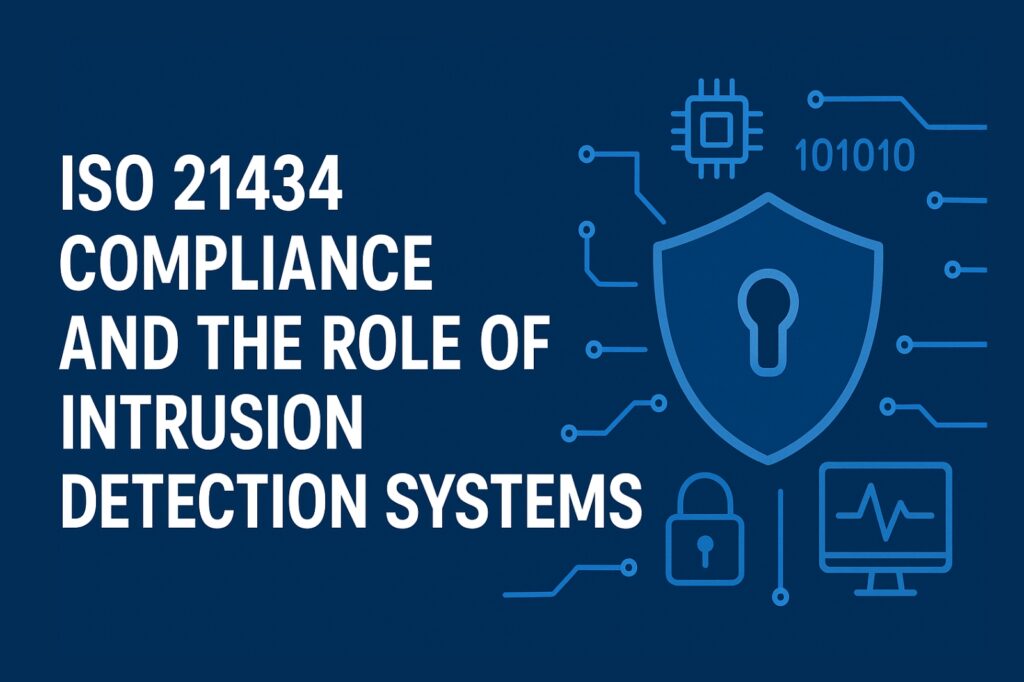Contents
The automotive industry is in the fast lane of a digital revolution. Today’s vehicles are no longer mere mechanical beasts but sophisticated, software-driven machines, boasting intricate networks of sensors, processors, and communication channels. This evolution, while unlocking unprecedented levels of safety, convenience, and entertainment, has also opened the door to a new and formidable threat: cyberattacks. To navigate this challenging terrain, the industry has established a critical framework for cybersecurity: ISO SAE 21434. A key technological ally in achieving compliance with this standard is the automotive Intrusion Detection System (IDS automotive).
Demystifying ISO 21434: A Blueprint for Automotive Cybersecurity

ISO 21434, titled “Road vehicles — Cybersecurity engineering,” is an international standard that provides a comprehensive framework for managing cybersecurity risks throughout the entire lifecycle of a vehicle’s electrical and electronic (E/E) systems. From the initial concept and development through production, operation, maintenance, and eventual decommissioning, the standard mandates a rigorous, process-oriented approach to cybersecurity.
At its core, ISO 21434 compliance is not about prescribing specific technologies or solutions. Instead, it emphasizes the implementation of a robust Cybersecurity Management System (CSMS). This system requires automotive manufacturers and their suppliers to:
- Establish a culture of cybersecurity: This involves defining clear roles and responsibilities, providing adequate training, and ensuring that cybersecurity is a priority at all levels of the organization.
- Conduct thorough risk assessments: A crucial component of the standard is the Threat Analysis and Risk Assessment (TARA). This process involves identifying potential threats, analyzing their potential impact, and evaluating the likelihood of an attack.
- Implement and verify cybersecurity measures: Based on the TARA, appropriate security controls must be designed, implemented, and rigorously tested to mitigate identified risks.
- Ensure continuous monitoring: The cybersecurity landscape is constantly evolving. Therefore, ISO 21434 requires continuous monitoring of vehicles in the field to detect new vulnerabilities and respond to incidents effectively.
This standard works in tandem with the United Nations Regulation No. 155 (UN R155), which makes cybersecurity a mandatory prerequisite for new vehicle type approval in numerous countries. In essence, while UN R155 sets the regulatory “what,” ISO 21434 provides the detailed “how” for achieving a secure automotive ecosystem.
The Watchful Guardian: How Automotive IDS Drives ISO 21434 Compliance
This is where the automotive Intrusion Detection System (IDS) comes into play as a critical technological enabler for ISO 21434 compliance. An IDS is a security solution designed to monitor the internal networks and components of a vehicle for malicious activity or policy violations. Think of it as a vigilant security guard for the car’s digital infrastructure.
Automotive IDS solutions are broadly categorized into two types:
- Network-based Intrusion Detection Systems (N-IDS): These systems monitor the traffic flowing across the vehicle’s internal networks, such as CAN (Controller Area Network) and Ethernet. By analyzing communication patterns, N-IDS can detect anomalies that may indicate an attack, such as unauthorized messages or denial-of-service attempts.
- Host-based Intrusion Detection Systems (H-IDS): These systems are deployed on individual Electronic Control Units (ECUs) within the vehicle. They monitor the behavior of the ECU itself, looking for signs of compromise, such as unauthorized software modifications or unusual process activity.
The synergy of N-IDS and H-IDS provides a multi-layered defense strategy, offering comprehensive visibility into the vehicle’s security posture.
The role of IDS in automotive directly supports several key requirements of ISO 21434:
- Continuous Cybersecurity Activities: The standard mandates ongoing monitoring for vulnerabilities and threats. An IDS provides the real-time data necessary to fulfill this requirement by constantly looking for suspicious activities.
- Incident Response: In the event of a security incident, an IDS can provide crucial logs and alerts that help security teams understand the nature of the attack, its scope, and how to respond effectively. This aligns with the incident response planning and execution requirements of the standard.
- Verification and Validation: The data generated by an IDS can be used to verify the effectiveness of implemented security controls and to validate that the vehicle’s systems are behaving as expected in a real-world environment.
As vehicles become increasingly connected and autonomous, the importance of robust cybersecurity measures cannot be overstated. ISO 21434 compliance and IDS automotive solutions are inextricably linked in the quest to build a safer and more secure future for mobility. While the standard provides the essential framework for managing cybersecurity risks, automotive IDS provides the practical tools to detect and respond to threats, ensuring that the digital heart of the modern vehicle remains protected against the ever-present danger of cyberattacks.

